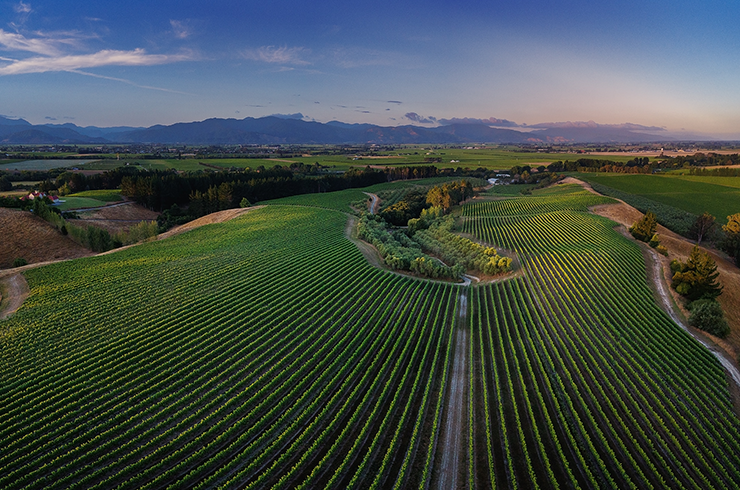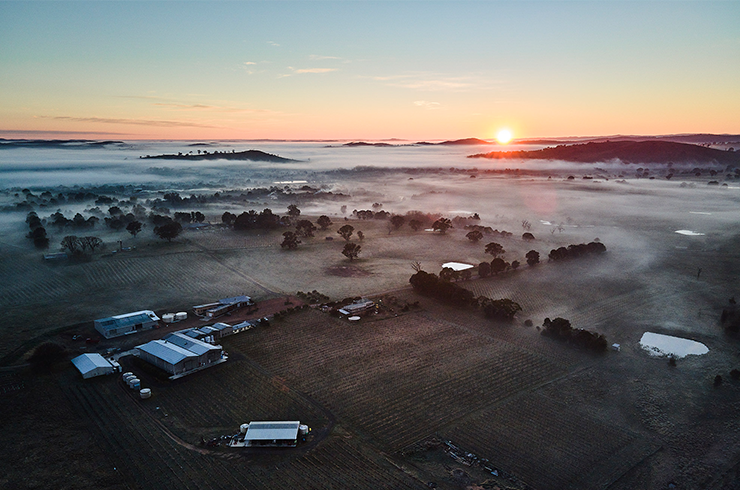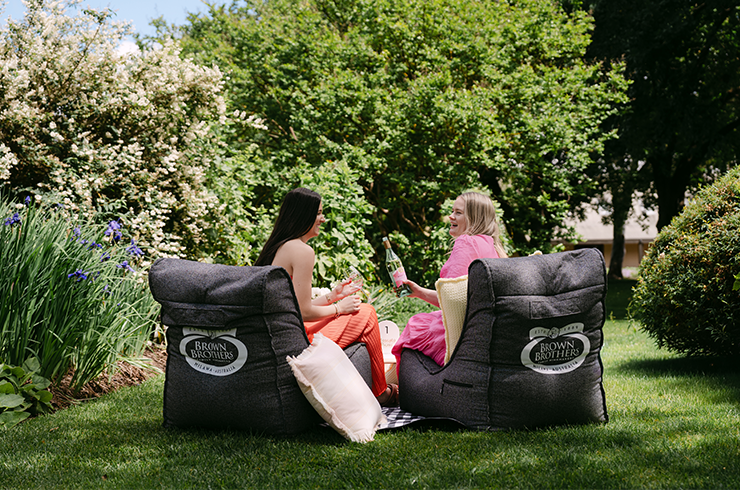There has been much discussion about the rising levels of alcohol in Australian red wines. Embedded in the discussion are a number of questions. What do we mean by high alcohol? How widespread is it? What is its cause? Does it need to be controlled? And if so, how?
There is one obvious answer to the second question: the epicentre of high alcohol red wines is the Barossa Valley, with McLaren Vale a close second, the Clare Valley third. Grenache frequently has the highest alcohol but shiraz is not much lower and is a far more important variety.
The emergence of high octane Barossa shiraz is often said to be due to the love of it by Robert M. Parker, the American wine writer who has stood like a colossus over world opinion since 1982. But the wine had to be there in the first place to attract his attention. Moreover, its occurrence is by no means uniform: you might think the new generation of cool-grown shiraz are less affected and you would be largely right.
But what about shiraz grown in the hottest major wine region in Australia – the Hunter Valley? In 1965, Lindeman’s produced two shiraz wines (one with 5 per cent pinot noir) labelled Reserve Bin 3100 and 3110 respectively. In my Australian Wine Compendium, written in 1984, I gave them the equivalent (then on a 20-point scale) of 97 and 99 points, commenting on 3110 that it was “a complete wine, absolute perfection to drink now, although it will undoubtedly hold together for many years”.
Now close on 50 years old, these two wines are still magnificently rich and vibrant; if recorked, they will cruise through the next 50 years, long outliving Grange. In those days, the alcohol level did not appear on the label but the wines have been tested and found to have 15%.
What of the Hunter Valley's shiraz of today? In 2009, Tyrrell's made Johnno's Shiraz (from 103-year-old vines) and Winemakers Selection 4 Acres Shiraz (from 130-year-old vines), each with 13%. Hunter winemakers have realised that retaining as much natural acidity as possible (consistent with flavour ripeness) is a primary aim. What does all this mean for those ’65 beauties? That they were a freak of nature (a bone-dry vintage but with good subsoil moisture), and that numbers can't give all the answers.
How much alcohol is in red wine?
For the sake of simplicity, the alcohol of any red wine in excess of 14.5% (alcohol by volume) can be said to be high. As recently as the 1980s, the benchmark was 13.5%. Ten years earlier, it might have been 12.5%.There is one obvious answer to the second question: the epicentre of high alcohol red wines is the Barossa Valley, with McLaren Vale a close second, the Clare Valley third. Grenache frequently has the highest alcohol but shiraz is not much lower and is a far more important variety.
The emergence of high octane Barossa shiraz is often said to be due to the love of it by Robert M. Parker, the American wine writer who has stood like a colossus over world opinion since 1982. But the wine had to be there in the first place to attract his attention. Moreover, its occurrence is by no means uniform: you might think the new generation of cool-grown shiraz are less affected and you would be largely right.
But what about shiraz grown in the hottest major wine region in Australia – the Hunter Valley? In 1965, Lindeman’s produced two shiraz wines (one with 5 per cent pinot noir) labelled Reserve Bin 3100 and 3110 respectively. In my Australian Wine Compendium, written in 1984, I gave them the equivalent (then on a 20-point scale) of 97 and 99 points, commenting on 3110 that it was “a complete wine, absolute perfection to drink now, although it will undoubtedly hold together for many years”.
Now close on 50 years old, these two wines are still magnificently rich and vibrant; if recorked, they will cruise through the next 50 years, long outliving Grange. In those days, the alcohol level did not appear on the label but the wines have been tested and found to have 15%.
What of the Hunter Valley's shiraz of today? In 2009, Tyrrell's made Johnno's Shiraz (from 103-year-old vines) and Winemakers Selection 4 Acres Shiraz (from 130-year-old vines), each with 13%. Hunter winemakers have realised that retaining as much natural acidity as possible (consistent with flavour ripeness) is a primary aim. What does all this mean for those ’65 beauties? That they were a freak of nature (a bone-dry vintage but with good subsoil moisture), and that numbers can't give all the answers.

Warmer growing conditions may cause sugar accumulation to increase more rapidly than flavour, leaving the winemaker with a choice of evils: high alcohol or partly unripe grapes.
What is the cause of the epidemic of vinous/alcohol obesity in modern day red wine? It is partly due to the belief that Robert Parker acolytes demand the maximum density, weight, sweet fruit flavour and tannins, all given by grapes that have partially shrivelled before they are picked. Higher sugar levels at harvest produce higher alcohol, and warmer growing conditions may cause sugar accumulation to increase more rapidly than flavour, leaving the winemaker with a choice of evils: high alcohol or partly unripe grapes.
Does the alcohol need to be controlled? That’s a relatively easy question to answer. Having a taste of a 16% Barossa shiraz produces a shock-and-awe response from the uninitiated. But the impact palls after the second taste and in the absence of a massive barbecued T-bone steak, the second glass becomes more difficult. Also important is the stereotype of Australian reds in export markets as rugged, alcoholic and tannic. Then there are the health issues of moderate consumption, booze buses and such like.
Next, how do you control alcohol levels? Modern reverse osmosis equipment can remove as much alcohol as you wish, but it needs a skilled operator and savvy winemaker/taster. A process such as this is fixing a problem and it's obviously better that the problem isn't created in the first place. Moreover, it is anathema to the natural wine brigade.
And there are numerous ways to deal with the problem at source in the vineyard. The most simple way to reduce alcohol levels is to pick the grapes earlier; here, the example of chardonnay has been a revelation. Instead of looking for brown pips, golden skin colours and luscious fruit ex the vine, there has been a holistic approach to vine health, retention of acidity and picking over a period of time at different alcohol levels. This has led to the enthusiastic adoption of earlier picking, maximising fresh flavours and lower alcohol levels.
The lesson has been taken on board with red wines (cabernet sauvignon and pinot noir suffer most from alcohol levels over 14%) with surprising results. But that is only the beginning. Deliberately leaving a denser canopy (of leaves in the vineyard) is one possibility, another is micro-misting the canopy to emulate a Coolgardie Safe, significantly reducing temperature. But this is only feasible in a dry climate with minimum disease pressure and unlimited water. Thick mulch under the vines will conserve water, build soil health and have some cooling effect. If Armageddon arrives, planting on south-facing slopes (traditionally spurned in favour of warmer north-facing slopes) may come into vogue.
Finally, if all else fails, go high, young man (or woman). At present, an altitude of 1000m makes ripening very difficult but it may be the ultimate solution to a much warmer world.
Does the alcohol need to be controlled? That’s a relatively easy question to answer. Having a taste of a 16% Barossa shiraz produces a shock-and-awe response from the uninitiated. But the impact palls after the second taste and in the absence of a massive barbecued T-bone steak, the second glass becomes more difficult. Also important is the stereotype of Australian reds in export markets as rugged, alcoholic and tannic. Then there are the health issues of moderate consumption, booze buses and such like.
Next, how do you control alcohol levels? Modern reverse osmosis equipment can remove as much alcohol as you wish, but it needs a skilled operator and savvy winemaker/taster. A process such as this is fixing a problem and it's obviously better that the problem isn't created in the first place. Moreover, it is anathema to the natural wine brigade.
And there are numerous ways to deal with the problem at source in the vineyard. The most simple way to reduce alcohol levels is to pick the grapes earlier; here, the example of chardonnay has been a revelation. Instead of looking for brown pips, golden skin colours and luscious fruit ex the vine, there has been a holistic approach to vine health, retention of acidity and picking over a period of time at different alcohol levels. This has led to the enthusiastic adoption of earlier picking, maximising fresh flavours and lower alcohol levels.
The lesson has been taken on board with red wines (cabernet sauvignon and pinot noir suffer most from alcohol levels over 14%) with surprising results. But that is only the beginning. Deliberately leaving a denser canopy (of leaves in the vineyard) is one possibility, another is micro-misting the canopy to emulate a Coolgardie Safe, significantly reducing temperature. But this is only feasible in a dry climate with minimum disease pressure and unlimited water. Thick mulch under the vines will conserve water, build soil health and have some cooling effect. If Armageddon arrives, planting on south-facing slopes (traditionally spurned in favour of warmer north-facing slopes) may come into vogue.
Finally, if all else fails, go high, young man (or woman). At present, an altitude of 1000m makes ripening very difficult but it may be the ultimate solution to a much warmer world.
Have you joined our wine club? Get started today!



